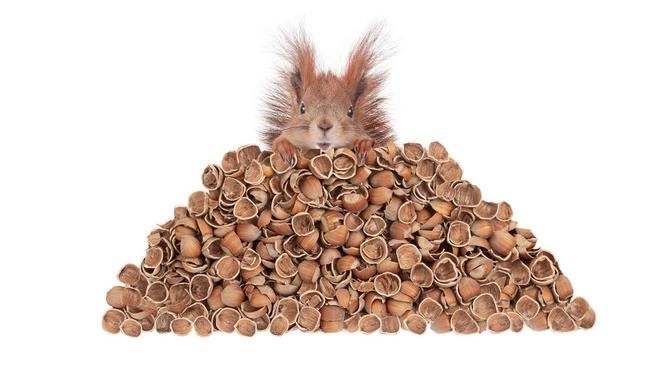Monsters of Rock: Critical minerals stockpiles could herald golden age for rare metals (or just big warehouses)
Western governments are ramping up calls to stockpile critical minerals. Will that provide the demand shock markets need, or just volatility?

Stockhead
Don't miss out on the headlines from Stockhead. Followed categories will be added to My News.
Western governments are ramping up calls to stockpile critical minerals to compete with China
But what impact will it actually have on market prices?
Lithium leader Albemarle tips more pain for producers
As Australia heads to the polls tomorrow, one policy from the Albanese government has caught the eye.
Its $1.2 billion critical minerals stockpile, accompanied by another $1bn for the now $5bn critical minerals facility, is its flagship attempt to twist Trump's arm on tariffs and beat China at its own game in rare earths.
The idea, which could put a floor under prices for new producers of things like rare earths, feels eerily similar to the hawkish tones of Labor stalwart Kim Beazley's rambling Diggers and Dealers address last year.
Only, it seems the one company that should be consulted on something like this – the only one in Australia actually producing commercial quantities of rare earths – wasn't.
"I have to say that I am at a loss to understand the policy,” Lynas (ASX:LYC) boss Amanda Lacaze said on the company's quarterly call this week. “It’s not going to suddenly make uneconomic projects economic. There is only $1.2bn in this fund. Even if you put half of that towards rare earths, well, that doesn’t even cover Lynas’ full year production.
“I cannot see how the government buying oxide is going to do anything except have the government needing to build a big warehouse.”
But Australia is not the only company aiming to stockpile critical minerals, and analysts from ANZ think similar moves afoot in Canada and South Korea could dramatically reshape how markets like rare earths and copper are structured.
The long game
China has been stockpiling minerals strategically "for some time", ANZ's Daniel Hynes and Soni Kumari said.
"Other countries now appear to be making similar moves. The US has, in recent years, moved to revitalise its national defence stockpile," they said in a note.
"Australia has also raised the possibility of a critical mineral reserve, while Canada and South Korea have said they will stockpile rare earth minerals from new projects.
"Although Europe does not have a formal strategic reserve of critical minerals, it has established the Critical Raw Materials Act to ensure access to a secure and sustainable supply.
"The emergence of strategic reserves could sustain a period of stronger demand. This should put a floor under prices for critical minerals such as copper, lithium and cobalt. The faster governments add to stockpiles, the greater the risk of volatility and market destabilisation. However, the risks of not doing anything could be greater over the longer term."
According to ANZ, WoodMac, Bloomberg and Macrobond data, inventory build has become a massive component of lithium, copper, aluminium and cobalt demand in China over to past six years.
Copper runs close to 65%, while lithium hovers around 40% (though many lithium chemicals spoil and need to be used within a tight timeframe).
The background for this is an increasingly staunch trade war between the US and China. China dominates the supply of critical minerals, including well over 80% of the rare earths supply chain and over 50% of lithium refining.
Because it is the main consumer for raw and intermediate materials, it can use levers that set prices at levels the West can't compete at. Stockpiling can be one of those measures. Equally stockpiling by countries outside China could shield them against future export restrictions, like those China has placed on gallium, germanium, antimony and heavy rare earths.
The US this week nailed its critical minerals deal with Ukraine, which reputedly holds Europe's largest (though as yet undeveloped) lithium reserves.
At the same time, Hynes and Kumari say China's stockpiling practices could actually mitigate downside to commodity demand.
"And this stockpiling appears to be a trend, not an aberration. Despite the accumulation, however, China’s inventories do not appear to be excessive relative to its storage capacity," they said. "So we think imports will continue at a high level, which will go some way to mitigating the downside impact of a slowing global economy on commodity demand."
Dislocations could result, though. Stockpiles are useful for governments because when prices are low they can soak up supply. But they then become an alternative source, which can cause volatility when those metals are released into the market.
"A race to secure and control critical minerals has the potential to exacerbate geopolitical tensions, with trade disputes, resource nationalism and export restrictions leading to global supply-chain disruption and threats to national security," Hynes and Kumari said.
"Current low prices offer an opportunity for governments to build national stockpiles, but that may be short-lived. Demand is expected to exceed supply across a range of markets by the end of the decade. That urgency will have to be managed, as the faster governments add to stockpiles, the greater the risk of volatility in prices and market destabilisation."
Lithium struggles continue
Overnight, the largest lithium producer in the world, America's Albemarle, delivered another downbeat take on the state of the sector.
Boss J. Kent Masters estimates 40% of the market is losing money right now, with a third of those lossmaking operations now out of circulation.
Lithium carbonate prices are hovering at their lowest ebb in the current down cycle at US$8700/t. In late 2022 they briefly surged to above US$80,000/t before a flood of supply from places like Africa, China and expansions in Australia came online.
Cost-cutting measures helped Albemarle address last year's pain, with its first quarter net income up over 1600% to US$41.3m.
Also continuing to stall a planned US$1.3bn lithium refinery in South Carolina – having also dramatically scaled back construction of a refinery in WA's Kemerton industrial precinct in 2024 – Masters said more producers will need to come out of the market in the short-term.
That could exacerbate supply shortages with demand continuing to rise at more than 20% a year.
"Prices well above current levels are required to support the necessary investment,” Masters said.
The ASX 300 Metals and Mining index fell 0.36% over the past week.
Originally published as Monsters of Rock: Critical minerals stockpiles could herald golden age for rare metals (or just big warehouses)


